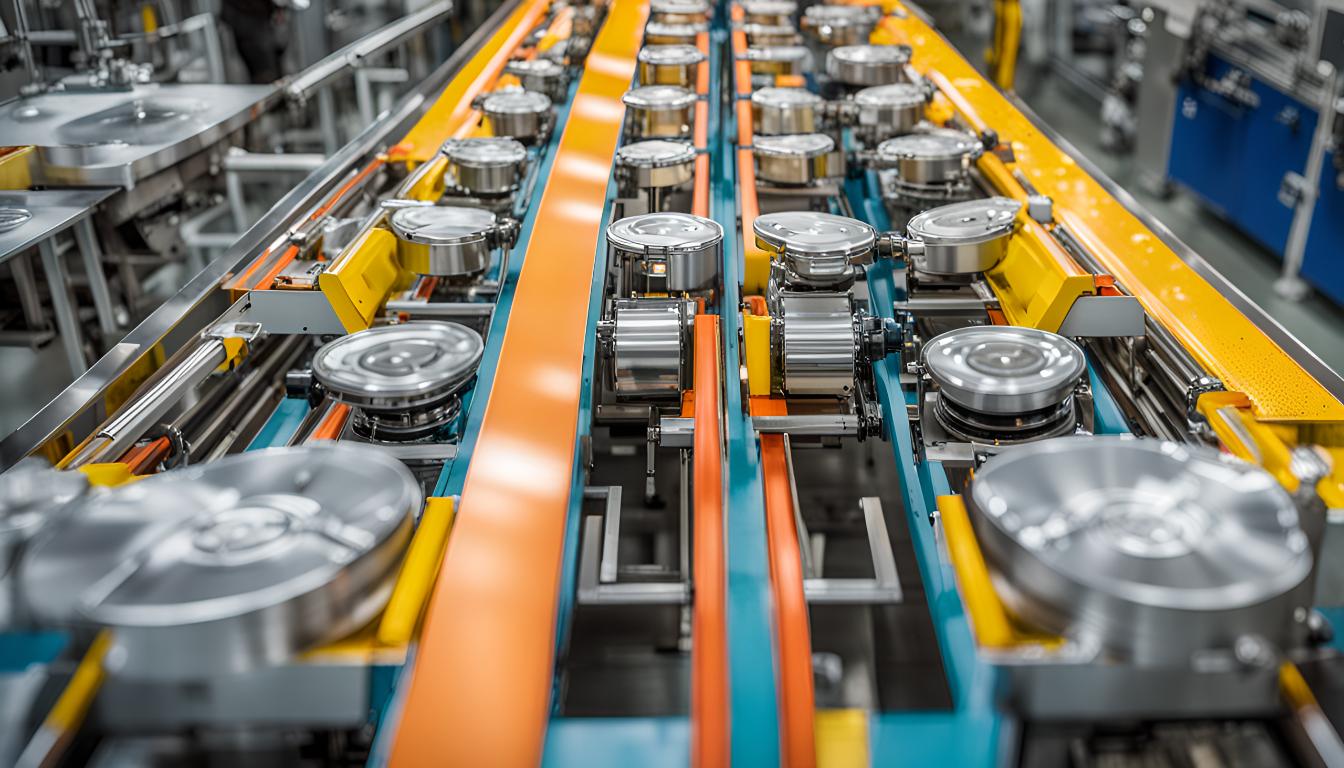22/04/2025
Fundamentals and Overview of Image Processing Technology
Image processing technology has become an indispensable part of technology today, as the process of understanding and analyzing digital information and visual content. In this article, we cover the basics of image processing technology, examine its applicability in a wide range from medicine to the security sector, and its transformative effects in the industrial field. This guide, which shows how it has revolutionized various industries with examples, is completed with recommendations to consider when developing image processing projects. Let's take a closer look at the role of image processing in our daily lives and business processes.

What is Image Processing?
Image processing is the process of obtaining information by performing various operations on digital images. These operations are done to enhance the image, modify certain features, or extract specific data from the image. Image processing can be carried out using both analog and digital methods; however, digital image processing is more widely used today.
This technology involves processing images using mathematical operations and algorithms. The image to be processed is represented by pixels and arrays that computers can interpret. Each pixel is represented by one or more numerical values, indicating the color and brightness of the image. Image processing algorithms perform necessary operations using these values.
This technology has a wide range of applications and can be integrated with various modern technologies like artificial intelligence and production automation. Industrial image processing plays a crucial role in processes such as quality control on production lines. With machines analyzing and classifying images, defective products can be automatically identified, and processing stages can be optimized.
The development of image processing algorithms constantly increases the effectiveness and application areas of this technology. Examples of these algorithms include edge detection, color filtering, noise reduction, and image segmentation. Each algorithm is designed for a specific image processing need and can serve different functions in various applications. Thus, image processing technology holds revolutionary potential across many industries.
Application Areas of Image Processing: From Medicine to Security
Image processing technology has the potential to revolutionize a wide variety of sectors, especially medicine and security. In medical imaging, it plays a critical role in the early diagnosis of diseases and improving treatment processes. Digital images like MRIs, CT scans, and X-rays can be evaluated more quickly and accurately through AI-powered analysis.
This technology also brings significant advancements in the field of security. For example, AI-powered image processing systems in airport security screenings can detect threats much faster, helping to improve overall safety. Similarly, surveillance cameras used for urban safety can automate crime analysis and prevention processes.
In the automotive industry, self-driving car technologies heavily rely on image processing. Vehicles use complex image processing algorithms to perceive their environment and respond to hazardous situations. These systems contribute to road safety by helping prevent accidents.
In military technologies, image processing systems enhance the detection and tracking capabilities of drones and other surveillance equipment, increasing the effectiveness of defense strategies. These systems provide critical data for identifying and tracking enemy targets.
Industrial Uses: How Image Processing is Creating a Revolution
Today, image processing technology is driving revolutionary advancements in the industrial sector. It provides great benefits in areas such as automation, quality control, and increasing production speed. Industrial image processing allows machines to replace the human eye, enabling faster and more accurate production.
Industrial image processing systems can perform high-accuracy analyses on images captured through various sensors and cameras. These systems can detect malfunctions on production lines in advance, continuously monitor product quality, and even automate packaging processes.
Quality control applications have significantly advanced thanks to AI-supported image processing techniques. These techniques allow each product to be examined in detail, minimizing production errors. They are also critically important for improving production efficiency and reducing costs.
The revolution in production automation has progressed even further with the integration of robots and automatic control systems using image processing technologies. This integration allows machines to continuously update themselves and makes production processes more flexible.
These processes developed using image processing not only improve efficiency in industrial facilities but also maximize workplace safety. Machines can detect potential hazards early and automatically stop operations in situations that do not require human intervention. This is a major safety measure, especially for workers operating in hazardous or hard-to-reach environments.
Recommendations for Successful Image Processing Projects
Successful implementation of image processing technology requires careful planning and management from start to finish. The first step should be to clearly define the project's purpose and objectives. This limits the scope of the project and provides a foundation for measuring progress.
At the beginning of the project, choosing the appropriate image processing algorithms is of critical importance. This choice varies based on the application area and the problem being addressed. For example, AI-supported algorithms can deliver more effective results in medical imaging or security systems. The choice of algorithm also directly impacts project performance and processing speed.
Data quality is another fundamental factor for success in image processing projects. High-resolution and diverse data enable algorithms to produce more accurate results. Therefore, the data collection process should be managed carefully, and datasets should be regularly updated and improved.
During the implementation phase, technical details such as integration and scalability become important. Especially in industrial image processing and production automation projects, integrating systems into existing production lines is critical for success. At the same time, designing systems to adapt to future technological changes and needs provides long-term benefits.
Every image processing project requires continuous testing and optimization. Testing whether systems operate correctly under real-world conditions and making necessary adjustments increase project efficiency and minimize potential errors. Regular evaluations during different stages of the project are indispensable for achieving success.
Frequently Asked Questions
What is image processing?
Image processing is a branch of computer technology aimed at analyzing digital images to extract information. This process is used to enhance, transform, or extract insights from images through various operations.
In which fields is image processing technology used?
Image processing technologies are used in diverse areas such as medical imaging, satellite image analysis, video surveillance systems, facial recognition systems, and automatic license plate recognition.
How is image processing used in industrial applications?
In industrial fields, image processing is used in various processes including product quality control, error detection in production, vision-based robotic guidance, and packaging. For example, a camera on the production line can be used to check whether products are correctly aligned or defective.
What are the main techniques used in image processing?
Main techniques used in image processing include edge detection, image filtering, morphological operations, histogram equalization, and transformation operations.
What is the relationship between artificial intelligence and image processing?
Image processing is one of the core components of AI applications, especially when combined with deep learning techniques. AI models achieve high success in tasks such as object recognition, classification, and image analysis by learning from images.
What are future trends in image processing?
Future trends in image processing include deeper integration of AI and machine learning for increased efficiency and accuracy, more advanced use in augmented and virtual reality applications, and the implementation of higher-level image analysis systems in automation processes.

